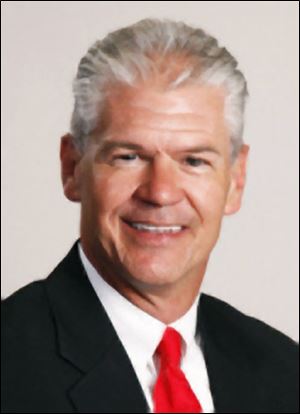
Speedy Ohio State freshmen in charge of pinning opponents back on kick returns
10/10/2012

Kerry Coombs
COLUMBUS — There are seven freshmen on Ohio State’s kickoff coverage team, and as assistant coach Kerry Coombs said, they don’t know what they don’t know.
A motley group of undersized burners, they are still busy memorizing the plays and learning their way about campus.
But there is one part of college life that requires no adjustment. It is the directive coach Urban Meyer gives the unsung unit that bullets downfield like 11 arrows toward a bull’s-eye.
Go!
“He wants us to not think about anything, not to worry about anything,” freshman cornerback Devan Bogard said. “Just get down there as fast as I can, and whoever's in my way, demolish them.”
Meet Ohio State’s sharks … err, piranhas.
“They can't be sharks yet, because they're this tall," Coombs clarified with a smile as he held his hand waist high. “They have to be piranhas. We like to say that when they go after a guy with the ball, it's like sharks to blood. But with this group, they're like piranhas. Just because they’re midgets.”
That is not a knock.
The eager-to-please tenderfoots are helping the Buckeyes take advantage of a new set of rules designed to slow down the game’s fastest and most dangerous play.
With kickoffs now setting sail from 35-yard line instead of the 30 in an effort to increase touchbacks and reduce brain-jarring collisions, many teams are content to boot the ball into the end zone rather than risk a momentum-swaying return. But Meyer is not one of those coaches, and on Saturday night, Nebraska found there was no escaping the piranhas.
The Buckeyes pinned NU inside its own 25-yard line — the new starting point after touchbacks — on 6 of 10 kickoffs and allowed the visitors past that mark only once. Three times, they hit the return man inside the 10-yard line, including Bogard’s takedown of Ameer Abdullah at the 8-yard line in the first quarter.
“They're fun to coach,” said Coombs, who coaches the cornerbacks on the unit, including freshmen Najee Murray (5-foot-9, 178 pounds) and Armani Reeves (5-10, 194).
“They're not perfect. they make a lot of mistakes, but they play really, really hard.”
For Coombs, an eternal cauldron of energy, the prospect of a future without kickoffs saddens him.
He believes football is headed that way, with the new rules as the first step.
“I think it will come out eventually, unfortunately,” he said.
The kickoff is widely seen as the most violent play in a violent sport, where players build speed over 50, 60, 70 yards in pursuit of a target running the opposite direction.
When the NFL last season implemented the rules since adopted by the NCAA — move kickoffs up five yards to the 35, limit the running start of coverage units from 10 yards behind the ball to five — head injuries dropped.
A study by Edgeworth Economics showed the number of concussions suffered on kickoffs fell from 35 in 2010 to 20 last year. (The percentage of kickoffs returned fell from 80.1 percent in 2010 to 53.5 percent.)
“I could see the day in the future where that play could be taken out of the game,” New York Giants owner John Mara told the team’s Web site. “You see it evolving toward that. Nobody would go that far now, but we talk about different blocks that we can outlaw.
“The problem is that the concussions come from everywhere, from the wedge, from the crossing blocks where a guy goes from one side of the field to another, from a full-speed collision between a return guy and a tackler. So there’s no one thing that you can do.”
OSU’s freshmen, though, live for the high-speed thrill of those moments where they can change a game while coaches have no plans to ease off the throttle. In fact, each Thursday, a race is held for members of the coverage team, cultivating a mindset that translates to Saturdays.
"There's a race to the ball, and the first one down there wins," said senior Zach Domicone, the unit's elder statesman.
Asked if the coverage team could graduate from piranhas to sharks with more performances like last Saturday, Coombs replied, "Well, I don't know if they're going to get a lot bigger."
"But you know what," he added, thinking the question over, "I wouldn't want to jump into a pool of piranhas myself. So you get one big shark or 11 piranhas. I think I’d take my chances trying to get away from a shark. They’re going to be factors in games.”
Contact David Briggs at: dbriggs@theblade.com, or 419-724-6084 or on Twitter @DBriggsBlade.